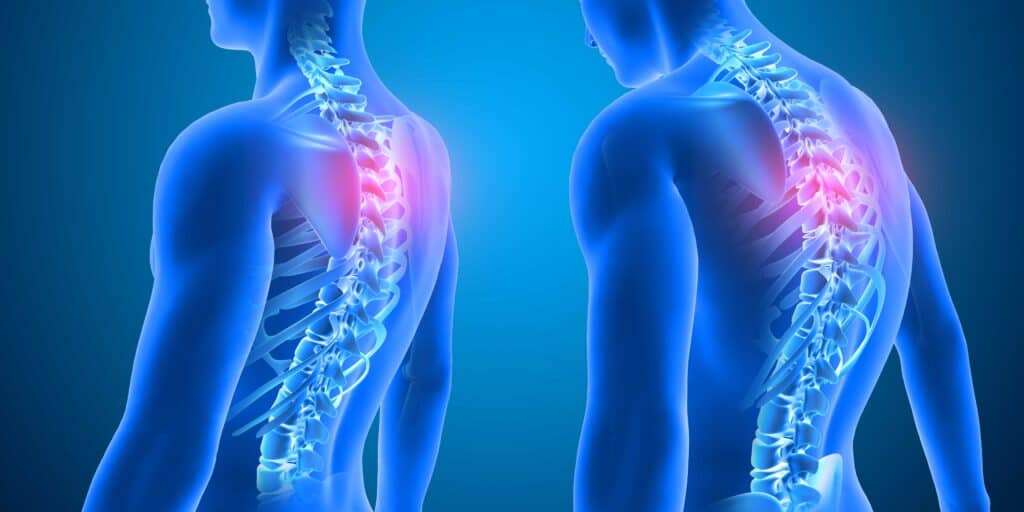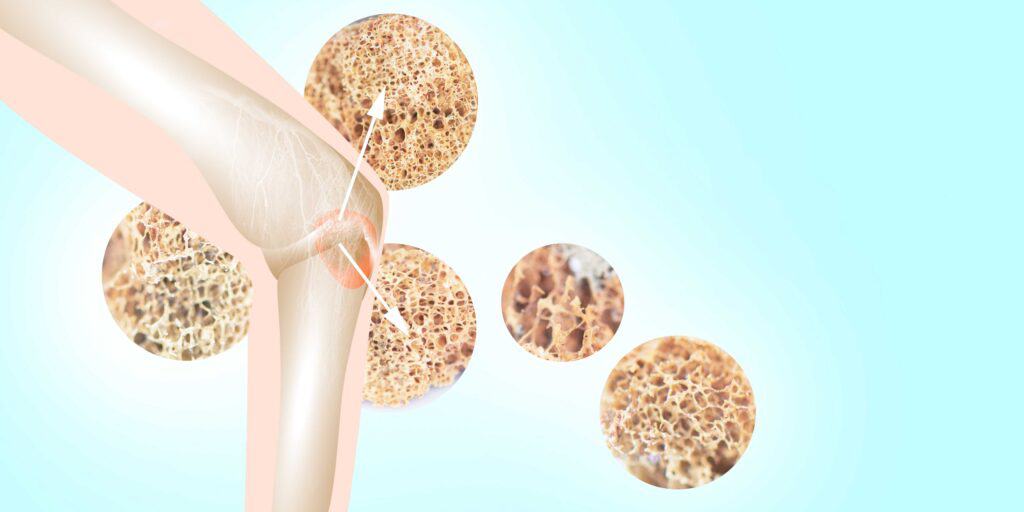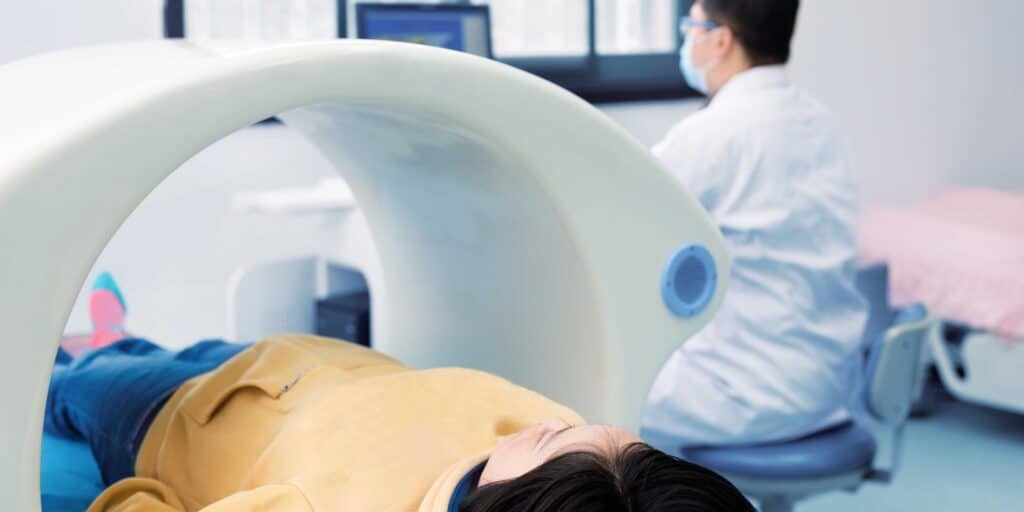Low bone density can lead to a number of problems, including fractures and osteoporosis.
Bone health deteriorates over time, so early diagnosis and treatment are crucial for maintaining bone density as you age. In some cases, osteoarthritis can result from low bone density, so taking the necessary precautions is important.

Osteoarthritis is a progressive joint condition where joint cartilage gradually deteriorates. It is the most common form of arthritis, and elderly people are more likely to develop it.
The majority of individuals with osteoarthritis have years-long, progressive joint degeneration. Osteoarthritis can, however, swiftly get worse for certain people. The neck, lower back, knees, hips, and hands are the joints that are most frequently affected.
Pain and stiffness in the afflicted joint or joints are signs of osteoarthritis. After resting or being idle, this pain typically gets worse. Reduced range of motion in the joints is another symptom of osteoarthritis for certain patients.
Osteoarthritis can cause significant pain and disability for some people, while for others it is relatively mild and does not affect day-to-day activities. If you think you may be suffering from osteoarthritis, speak to your doctor for diagnosis and treatment options.
Osteoarthritis (OA) and osteoporosis are two conditions that often affect older adults. Although they sound similar and are both chronic diseases affecting the quality of life, there are several key differences between the two conditions.
osteoarthritis is a condition that results in the deterioration of the cartilage that cushions the ends of bones in your joints. Osteoarthritis most commonly affects the hands, knees, hips, and back. Osteoporosis, on the other hand, is a condition that causes bones to become weak and brittle. It can affect any bone in your body but is most common in the hips, spine, and wrist.
While osteoarthritis can cause a variety of symptoms, osteoporosis typically does not cause any symptoms until the bone fractures. When osteoarthritis does cause symptoms, they may include pain, stiffness, and decreased range of motion in the affected joint. Osteoporosis can lead to fractures, but these are typically caused by a minor fall or bump.
Another way to tell them apart is by their age group; osteoarthritis generally affects adults from middle age onwards, while osteoporosis mostly affects older adults. Finally, osteoarthritis is a disease of the joints while osteoporosis is a disease of the bones. Bearing these distinctions in mind will help you better understand these two diseases and how to treat them accordingly.
Low bone density is a stage between healthy bones and osteoporosis. It is diagnosed when a person’s bone density is lower than average but not low enough to be called osteoporosis. Low bone density, like osteoporosis, arises when new bone growth does not keep pace with bone degradation.
There are several therapy options for low bone density. The most popular therapies involve lifestyle changes such as boosting calcium and vitamin D intake, getting more exercise, and quitting smoking. Calcium is present in dairy products, green vegetables, and supplements. Vitamin D is found in eggs, fish, and fish oil; your body also creates vitamin D in response to sunlight.
Exercise helps to build and maintain healthy bones by putting stress on them that causes them to become stronger. Weight-bearing exercises such as walking, running, lifting weights, and playing tennis are especially good for bones. Smoking cigarettes decreases the amount of blood that flows to the bones, making them weaker.
If lifestyle changes do not help low bone density, there are other treatment options available such as medications that stop or slow down low bone density.

Osteoarthritis is a type of arthritis that most often affects the hands, knees, hips, or spine. It usually develops gradually, and in the early stages, joints may pain after physical work or activity. Osteoarthritis is caused by the breakdown of cartilage, the tissue that cushions and protects the ends of bones in your joints. When cartilage breaks down, it leaves bone unprotected. This makes it easier for bones to rub against each other, causing pain, swelling, and loss of motion.
If you think that your bones may be hurting because of osteoarthritis, contact us.
There is no cure for osteoarthritis, but there are treatments that can help reduce pain and improve joint function. If you think you may have osteoarthritis, it’s important to see a doctor for a diagnosis. The sooner you start treatment, the better chance you have of slowing the progression of the disease.
There is no one-size-fits-all treatment for osteoarthritis. The best treatment for you will depend on your symptoms, as well as the severity of your osteoarthritis. Most doctors will start with conservative, noninvasive treatments such as lifestyle modifications and medication. If these treatments are not effective in managing your symptoms, you may require more intensive treatment such as surgery. Regardless of what treatment you need, the goal is to reduce pain and improve joint function. With the right treatment plan, it’s possible to live a full and active life despite osteoarthritis.
Early symptoms of osteoarthritis can be subtle, and because they occur gradually, you might not notice them at first. However, there are early warning signs that can indicate the presence of osteoarthritis, even before noticeable symptoms appear.
One early symptom is clicking or cracking sounds during movement. This is caused by the loss of cartilage in the joints, which allows the bones to rub together. Joint stiffness is another early symptom of osteoarthritis. This is usually worse in the morning or after a period of rest. Reduced flexibility and limited range of motion are also early symptoms. As the condition progresses, joints may swell due to the buildup of fluid. Unfortunately, once the cartilage that protects your joints starts to deteriorate, it does not regenerate on its own. Pain and discomfort are common osteoarthritis symptoms, but being aware of early warning signals can make a significant difference in how much you suffer the calling card symptoms of osteoarthritis.
Understanding the symptoms of osteoarthritis might drastically alter your treatment plan as well as your daily life.
Osteoarthritis treatment focuses on symptoms such as pain and reduced mobility. If you have osteoarthritis and are experiencing early warning signals, you may be able to avoid surgery. Non-surgical osteoarthritis therapies include:
Anti-inflammatory drugs: These can be taken orally or injected directly into the affected joint.
Mobility exercises and physical therapy: A physiotherapist can help you develop an exercise program that improves your range of motion and strengthens the muscles around the joints.
Joint Aspiration: This involves draining fluid from the joints to reduce pain and inflammation.
Steroid injection: This can help to reduce inflammation and pain in the short term.
If your osteoarthritis is severe or you have delayed too long to seek medical attention, you may need to explore surgical options. Osteoarthritis surgical treatments can relieve pain and improve range of motion. Surgery is usually only recommended if other treatments have failed to provide relief. The most common type of surgery for osteoarthritis is joint replacement surgery. This involves replacing the damaged joint with an artificial one. Joint replacement surgery can be highly effective, but it is a major operation with a long recovery time.
Lifestyle changes can play a role in managing osteoarthritis. These changes can help to slow down the progression of the disease and improve symptoms. Some lifestyle changes that may be helpful include:
Eating a healthful diet: A diet rich in fruits, vegetables, and calcium-rich foods can help to support bone health and reduce the risk of osteoarthritis.
Exercising regularly: Exercise can help to strengthen bones and muscles, and improve joint range of motion. It is important to consult with a doctor or physical therapist before starting an exercise program.
Avoiding smoking: Smoking can increase the risk of osteoarthritis and lead to bone loss. If you smoke, quitting is one of the best things you can do for your health.
Limiting alcohol and caffeine consumption: Excessive alcohol consumption can damage bones and joints, while caffeine can promote dehydration. It is important to drink alcohol in moderation and stay well-hydrated by drinking plenty of water throughout the day.
Preventing falls: Falls are a common cause of fractures in people with osteoporosis. Taking measures to prevent falls, such as removing obstacles from walkways and using proper lighting, can help to reduce the risk of injury.
The long-term treatment options for osteoarthritis largely focus on managing the pain and symptoms of the disease.
In patients who do not respond to initial non-drug therapy and lifestyle change, long-term treatment options for osteoarthritis may include supplements like glucosamine and chondroitin, as well as topical pain-relieving creams, gels, and ointments. These options can help to relieve pain and improve joint function. However, it is important to speak with a doctor before starting any new medication or supplement, as they may interact with other drugs or have side effects. Additionally, while these treatments can be effective in managing symptoms, they do not cure osteoarthritis or prevent further joint damage. As such, it is important to continue to follow up with a doctor and make lifestyle changes to help manage the disease long-term.
If you don’t treat your osteoarthritis, it can lead to worsening of the chondrolysis (breakdown of articular cartilage). This leads to more pain and disability. Frequently, with more severe, untreated osteoarthritis, patients eventually lose their ability to ambulate independently. They often become wheelchair-bound, and this may increase their risk of infections such as urinary tract of respiratory tract infections.
Prolonged sitting and or bed rest can also result in skin ulcers, which are also become infected. Inactivity from osteoarthritis is also a known cause of deep vein thrombosis, which refers to the development of blood clots in the veins in the calf and leg. These blood clots can result in chronic leg swelling, and may also migrate to the lungs, where they can pose a threat to life.

If you are experiencing any of the symptoms associated with osteoporosis, osteoarthritis, or low bone density, please do not hesitate to contact us at The Orthopaedic & Pain Practice for treatment. We can help diagnose the problem and recommend an appropriate treatment plan to slow down the rate at which your bones are deteriorating. Our team is passionate about helping our patients maintain their mobility and independence for as long as possible, so don’t wait – contact us today! We can help slow down the rate of bone loss and keep you on your feet for years to come.